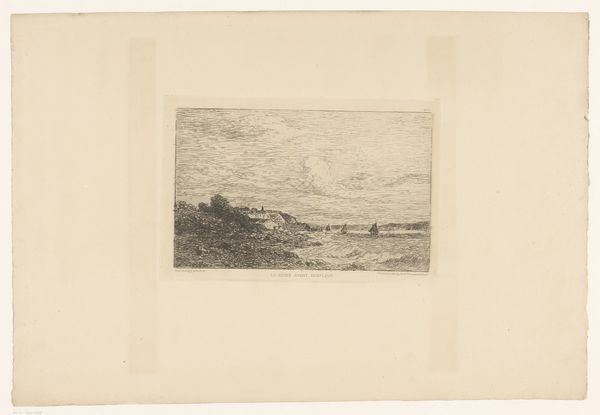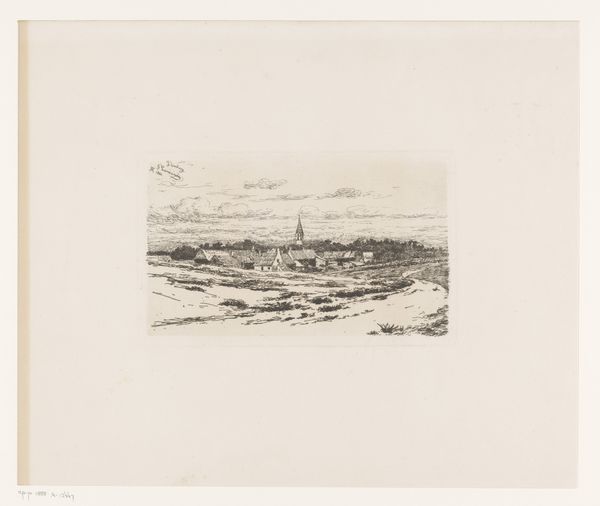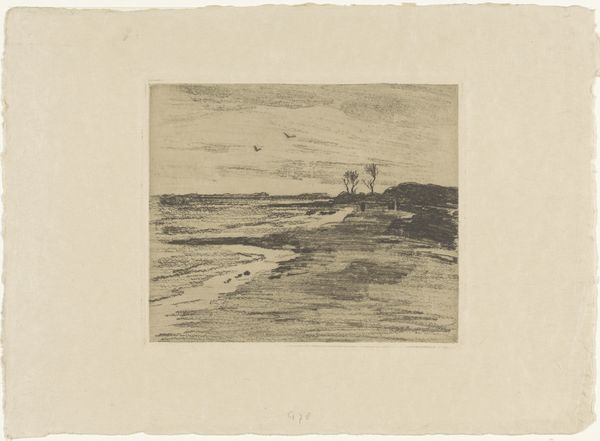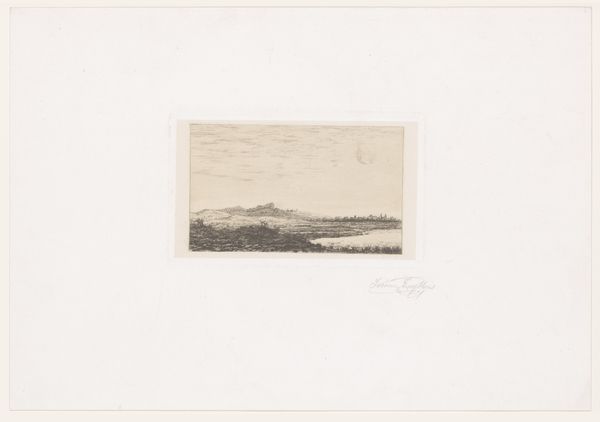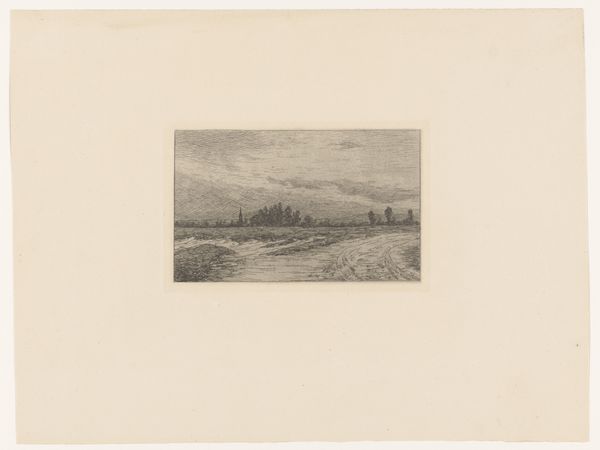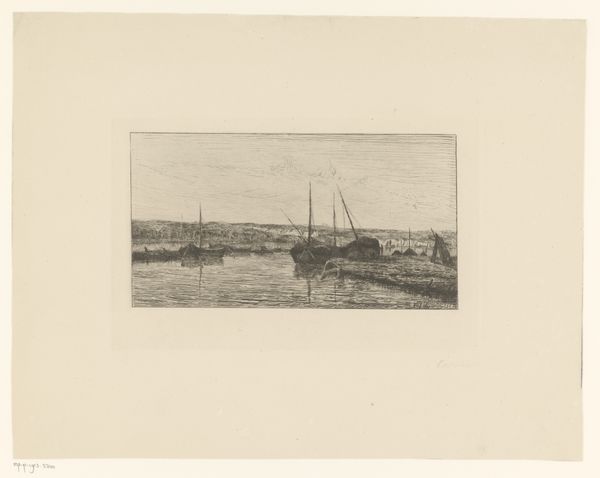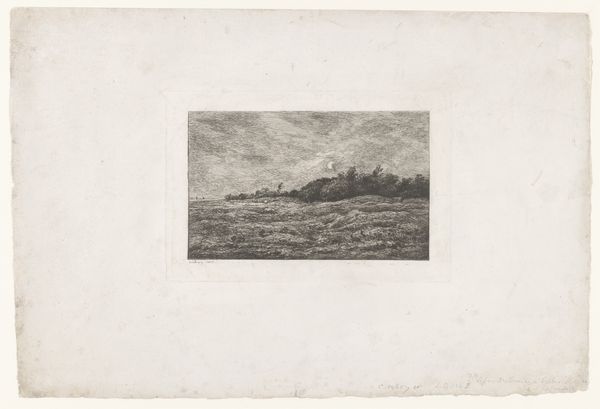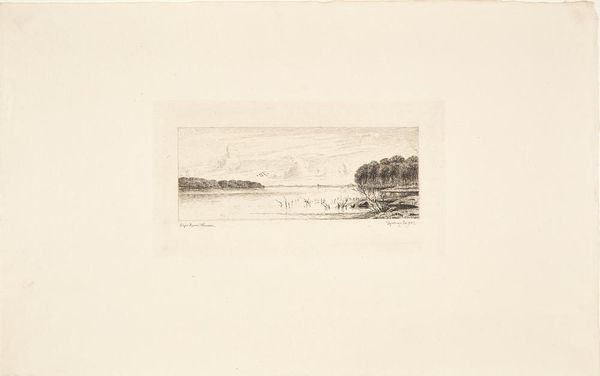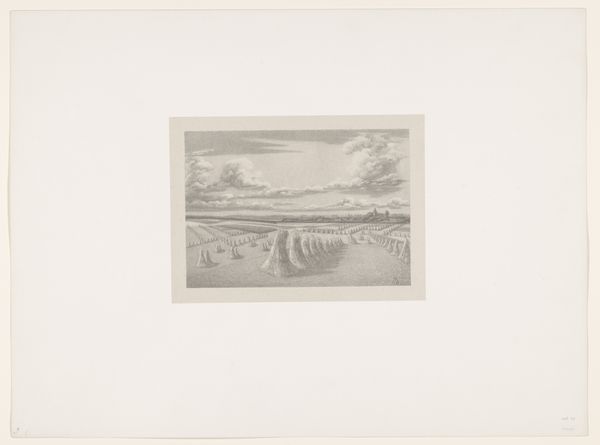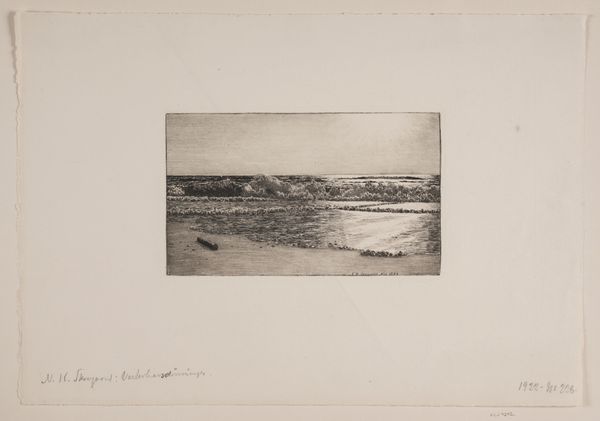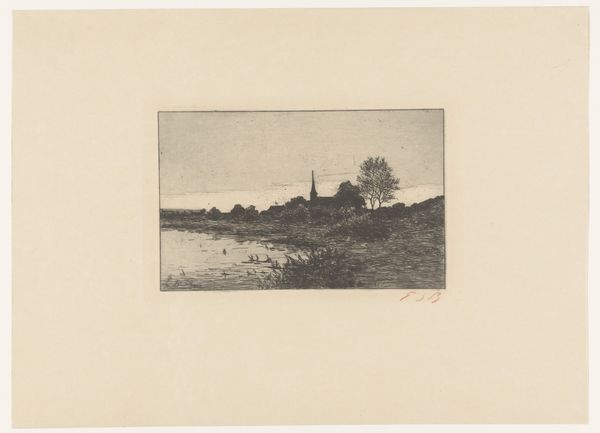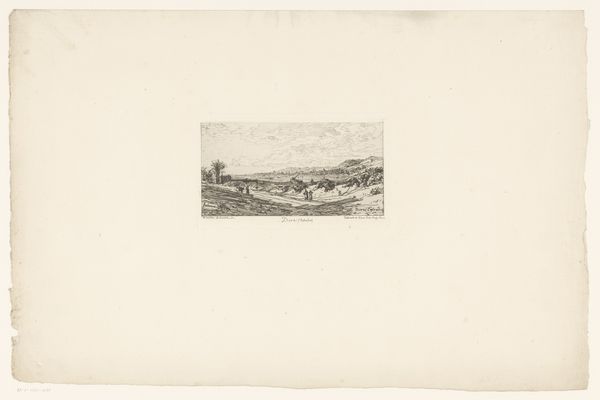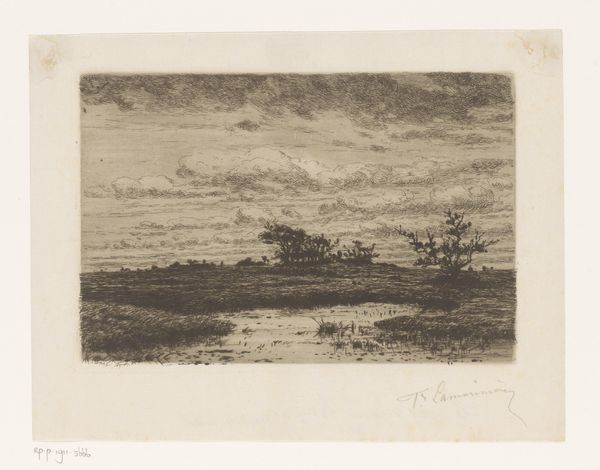
print, etching
# print
#
impressionism
#
etching
#
landscape
#
tonal art
#
realism
Dimensions: height 109 mm, width 191 mm
Copyright: Rijks Museum: Open Domain
Curator: Looking at Eugène Smits’ “Landschap in Ostia,” created in 1875 using etching, my first thought is melancholy. A somber yet peaceful representation. What do you notice first? Editor: I’m immediately drawn to the stark contrast and compositional balance. The horizon line neatly bisects the scene, setting up a dialogue between the turbulent, expressive mark-making of the land and the relatively blank, ethereal sky. Curator: Indeed. Ostia, you know, was the harbor city of ancient Rome. Its evocation in 1875 reminds us of cyclical patterns—urban rise and fall, shifting power dynamics. This print could also be commenting on the increasing industrialization that contrasted starkly with such quiet scenes. Editor: Observe how the texture, rendered solely through line, becomes almost tactile. Note the contrast between the density of lines in the foreground vegetation and the much sparser marks delineating the buildings and distant land. There’s a strategic distribution of visual information guiding our gaze. Curator: Interesting point. The light plays a crucial role in guiding us too. The etching, a form of printmaking, allows the artist to achieve granular tonal shifts that produce atmosphere and emotion; here evoking perhaps a collective nostalgia. Editor: To take your point further: beyond nostalgia, doesn't the work address, subtly, the romanticized vision of pastoral life during a period of intense social and environmental change, giving the aesthetic choices of the artist a socio-political underpinning? Curator: Certainly. Ostia was far from any hub, its state a potent reminder of how power erodes over time, of the fleeting nature of progress, perhaps even acting as a political or societal caution. It’s far from just a simple pretty landscape! Editor: I concur. Looking closely at the delicate line work, one might see, too, how Smits leverages the intrinsic properties of etching to emphasize the inherent qualities and the structural components of the scene itself. Curator: It truly speaks volumes—an introspective engagement for us here in the gallery as much as it was then. Editor: Absolutely, I agree. The experience of Ostia seems almost... universal? A pensive moment captured forever.
Comments
No comments
Be the first to comment and join the conversation on the ultimate creative platform.
